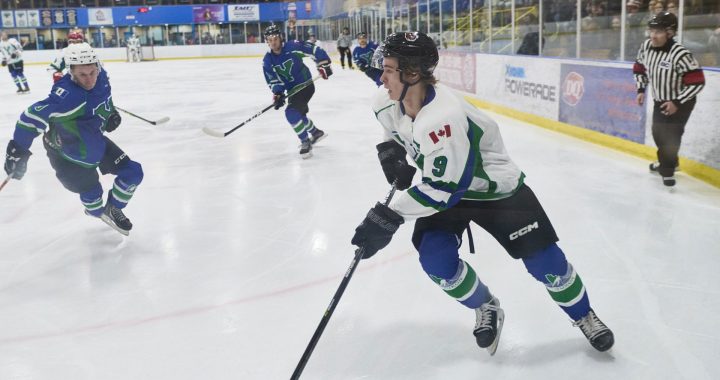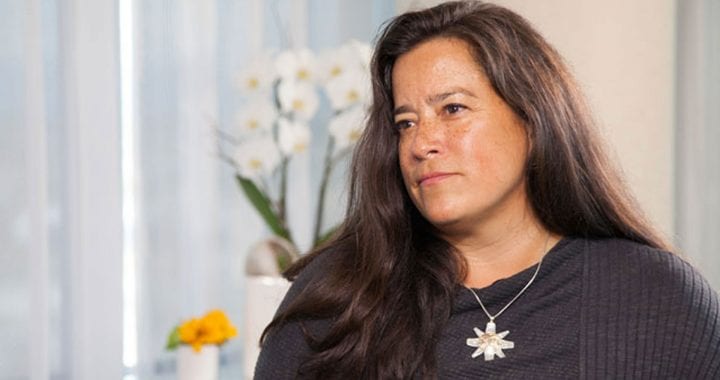There are still 160 acres to search for unmarked burial sites at the former Kamloops Indian Residential School in British Columbia, an expert with Tk’emlups te Secwépemc First Nation said Thursday.
The community held a press conference to give details and explain where they plan to go next after announcing in May that ground-penetrating radar had identified what are believed to be the remains of 215 children in unmarked graves.
Prof. Sarah Beaulieu was part of the team to find the remains of those children. What they found so far barely scratches the surface, she said.
“All residential school landscapes are likely to contain burials of missing children,” said Beaulieu. She said a two-acre plot in an apple orchard was selected for investigation for a number of reasons.
“The knowledge keepers recall children as young as 16 years old being woken in the night to dig holes for burials in the apple orchard,” she said. “Second, a juvenile rib bone that was resurfaced in the area, third a juvenile tooth that was excavated.”
Beaulieu said Indigenous values, protocols and help from community members were essential.
“Cultural protocols are as equally important as the science behind GPR and given the nature and given the sensitivity of this work, one cannot do done without the other,” she added. “It is important to note that remote sensing such as GPR is not necessary to note that children went missing during the Indian Residential school context.”
Kukpi7 (Chief) Roseanne Casimir called on Prime Minister Justin Trudeau to share records of the school.
“Tk’emlúps te Secwépemc has a responsibility and obligation to identify the unmarked graves found within our jurisdiction. The student attendance record that we’re created by the residential school,” said Casimir.
“Those primary documents currently within the custody within the Canadian government will be of critical importance to identify those lost children.”
Newly elected AFN National Chief RoseAnne Archibald said she is urgently working on the issue of the residential school sites across the country.
“I did bring it up with the prime minister when I had my congratulatory call with him and indicated that on our first formal call that this was a priority to ensure that First Nations have their resources and the funding to really complete this work,” said the national chief.
“We’re going to be just flooded with grief as we make more and more recoveries. So the prime minister has to make that commitment of resources to this process so that we can begin the healing journey.”
The issue of what happens to the graves wasn’t brought up today.
But moving forward Casimir said programs will be available for the Tk’emlúps te Secwépemc community that will reflect values and culture as well as an oral telling project from residential school survivors.
“The residential schools were specifically built to take the Indian out of us. To take away our language culture and traditions,” said survivor Evelyn Camille. “But it did not work.”
Watch more:
Since the Kamloops announcement, more than 1,000 potential remains have been detected at former sites using ground-penetrating radar. The reports have sparked an awakening across Canada and international attention.
The Cowessess First Nation in Saskatchewan reported 751 potential unmarked grave sites in a cemetery near the former Marieval Indian Residential School last month.
A letter from the Penelakut Tribe posted online Monday said more than 160 undocumented and unmarked graves were found on its lands in the Southern Gulf Islands near Chemainus, B.C.
Survivors are re-telling their stories to shed light on Canada’s dark history — a history still unfolding.
“For breakfast was lumpy uncooked mush with sour milk lots of times,” Kamloops survivor Rose Miller told APTN. “The food truck used to come in at five in the morning and we could smell the bread but we couldn’t have bread half the time, and we were so hungry.”
Read More: Kamloops: Stories of Survival
The government estimates 150,000 First Nations, Inuit and Métis children were forced to attend the state-funded and church-run institutions.
Often characterized by unpaid labour, unsanitary conditions and poor nutrition, the schools were designed to weaken family ties, destroy cultural links and eradicate Indigenous cultures.
Ottawa took over the system in 1969 under prime minister Pierre Trudeau. Many schools shut down in the ’70s with the last one closing in 1996.
The Indian Residential Schools Settlement Agreement was inked in 2006, compensating survivors and establishing the Truth and Commission (TRC) along with different healing measures. Prime minister Stephen Harper apologized publicly in 2008. The Vatican has not.
The TRC travelled across the country finding facts and gathering survivor testimony for years and, in its 2015 final report, documented the suffering, neglect, abuse, disease and death that ran rampant in the institutions.
The commission estimated between 4,000 and 6,000 children died, but the report said the true number of deaths may never be known due to missing and destroyed records.
The National Centre for Truth and Reconciliation estimates more than 4,000 children died at residential schools in Canada but says the total is likely much higher.
Two federal NDP MPs have been calling on Justice Minister David Lametti to establish an independent special prosecutor to investigate crimes committed against Indigenous Peoples through the residential school system.
There have also been calls for Ottawa to commission a full investigation into unmarked burial sites at former residential schools across the country.
Liberal ministers pledged to spend $27 million budgeted in 2019 on memorializing and searching sites.
Some provinces also committed money.
A National Residential School Crisis Line has been set up to provide support to former students. This 24-Hour Crisis Line can be accessed at: 1-866-925-4419










